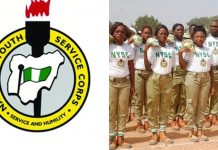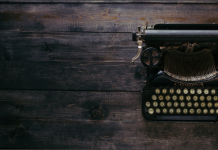3RD TERM EXAMINATION
CLASS: s. S. S.
1 subject: financial accounting
1 subject: financial accounting
1. The banker on who a cheque is drawn is referred to as the (a) drawer (b) drawee (c) payee (d) recipient (e) donor
2. Fixed Assets include__________ (a) prepayment (b) stock (c) accrual (d) land (e) debenture
3. A balance sheet is a (a) form of trading account (b) proof of arithmetical accuracy of postings (c) a statement showing profits at a certain date (d) a statement showing assets
and liabilities at a certain date
and liabilities at a certain date
4. A date of goods to Audu was not posted. This is an error of (a) omission (b) compensation (c) commission (d) principle
[button color="" size="" type="3d" target="" link=""]
5. Use the following information to answer questions 5 to 7
6. #
7. Debtors (1/1/98) 2,000
8. Debtors (31/12/98) 1,250
9. Cash received from Debtors 6,000
10. Bad debt written off 750
11. Discount allowed 500
12. Discount received 125
13. What was the amount of sales for the year? (a) #8,500
(b) #6,625 (c) #6,500 (d) #6,000
(b) #6,625 (c) #6,500 (d) #6,000
14. Assuming a gross profit of #3,000, what was the net profit? (a) #3,375 (b) #2,625 (c) #2,000
15. The objective of accounting information is to enable users to (a) prepare the financial statements (b) value stock (C) make decisions (d) prepare budgets
16. Which of the following date lines is correct for a profit & loss account (a) for the year ended 31st December 2009 (b) as at 31st December 2009 (c) for the period 31st December
2009 (d) as at the year 2009
2009 (d) as at the year 2009
17. Provision for depreciation on delivery van is charge to (a) trading (b) profit and loss account (c) appropriation account (d) manufacturing account
18. The going concern concept assumes that (a) every transaction is represented by a debit and credit entry (b) the currency must not change (c) the firm is a legal entity (d) the business will continue to operate indefinitely
19. The two fundamental books of accounts are (a) returns inwards and outward (b) journal and ledger (c) discount allowed and received (d) credit not and debits note
20. The major reasons why we prepare trading account at is
to ascertain (a) gross profit / gross loss (b) net profit (c) net loss (d) all of the above
to ascertain (a) gross profit / gross loss (b) net profit (c) net loss (d) all of the above
21. Which of the following does not belong to the group (a)
plant and machinery (b) land and building (c) freehold premises (d) stock
plant and machinery (b) land and building (c) freehold premises (d) stock
22. Final account is an account of a sole trader (a) Yes
(b) No (c) May be (d) None of the above
(b) No (c) May be (d) None of the above
23. ________is the reasons why we prepare profit & loss account (a) net profit / loss (b) gross profit / loss (c) overhead profit (d) A & B
24. Trial balance prepared to (a) detect fraud (b) ascertain losses (C) ascertain profits (d) test arithmetical accuracy of entries made in the ledger
25. _______is a statement of the assets at a particular amount in times and the liabilities and proprietor’s capital (a) trading account (b) trial balance (c) balance sheet (d) balance note
26. Goodwill, patents and trade mark and classified under
(a) fixed assets (b) current assets (c) intangible assets (d) wasting assets
(a) fixed assets (b) current assets (c) intangible assets (d) wasting assets
27. One of the reasons why some people practice single entry system is__________ (a) they think it is not necessary for them to practice double entry (B) they believe that double entry system is only meant for married people (c) they think their account is too small and it will
sound so funny and stressful to practice double entry (d) A & C
sound so funny and stressful to practice double entry (d) A & C
28. The concept of double entry book – keeping states that (a) if you receive goods on credit the seller becomes your creditor (b) for every debit entry, there must be a corresponding credit entry (c) one partyreceives and another pert gives value (d) A & C
INSTRUCTION: Answer any three questions here but number 5 is compulsory
Additional Information
3RD TERM EXAMINATION
CLASS: S. S. S. 2
subject: financial accounting
Use the following to answer questions 6 & 7
D
Cash in
hand 1,440
hand 1,440
Cash at
bank 2,440
bank 2,440
Stock 2,500
Furniture &
fittings 2,200
fittings 2,200
Creditors 1,000
• The capital is (a) D7,580 (b) D6,580 (c) D5,380 (d) D1,000
• The liability is_________ (a) D7,530 (b) D1,000 (c) D5,380 (d) D6,580
• Which of the following is found in a memorandum of association? (a) objective of the business (b) payment of dividend (c) appointment of director (d) interest and opinion of member
• A balance sheet shows only (a) assets and capital (b) fixed assets and current assets (c) assets and long term liabilities (d) assets and liabilities
• Which of the following is not a revenue to a local government (a) personal income tax (b) fines (c) licenses (d) tenement rates
• Which of the following is not found in the personal ledger (a) debtors account (b) creditors account (c) nominal account (d) capital account
• Which of the following is not part of factory overhead? (a) depreciation of fixture and fittings (b) factory salaries (c)factory lighting and heating (d) depreciation of plant and machinery
• Which of the following does not appear in a bank statement? (a) dividend received (b) bank charges (c) uncredited cheques (d) dishonoured cheques
• A medium of imputing data into the computer is through the use of the (a) software (b) monitor (c) hardware (d) keyboard
• Which of the following is the basic accounting equation (a) Capital = Assets + Liabilities (b) Assets =Liabilities – Equity (c) Assets = Capital + Liabilities (d) Liabilities =
Assets + Liability
Assets + Liability
• A Sales Day book is used for recording (a) credit sales (b) cash sales (c) return sales (d) hire purchase
• Which of the following is not a characteristic of a computer (a) highly diligent (b) highly accurate (c) very fast (d) large storage capacity
• Which of the following is not used in solving problems of incomplete records (a) control accounts (b) statement of affairs (c) cash book (d) balance sheet
• The amount set aside out of profits earned by
a company which are not meant for liability or contingency are (a) reserve
(b) dividends (c) provision (d) retained profits
a company which are not meant for liability or contingency are (a) reserve
(b) dividends (c) provision (d) retained profits
• Books of account consists (a) ledger and principal book (b) folios and subsidiary books (c) ledgers and cash book (d) ledgers and subsidiary books
THEORY
Kindly share with friends and fellow teachers
[/button]
[/button]




